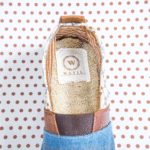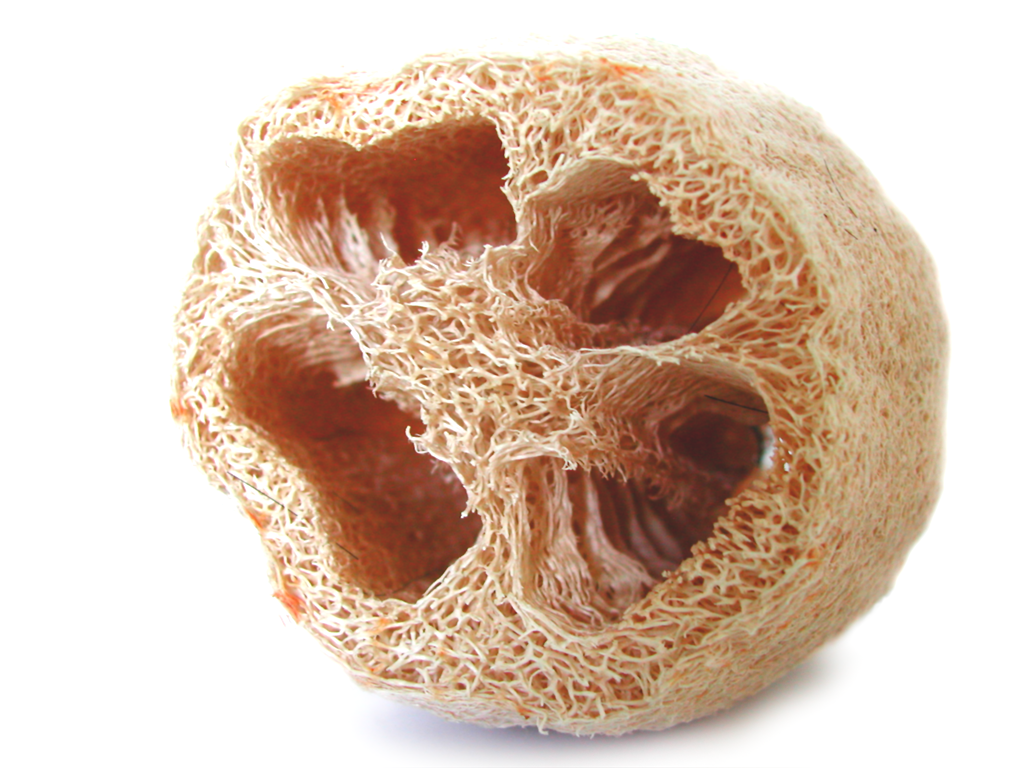Luffa (loofah, sponge gourd, Egyptian cucumber), are a sponge-like network of xylem fibres from the fruit of Luffa aegyptiaca, a genus of tropical and subtropical annual vines in the cucumber family. The sponge The fruit of L. aegyptiaca and related L. acutangula are also cultivated and eaten as a vegetable.
Tropical and subtropical regions. Can be grown in temperate regions in walled microclimates / greenhouses. Luffa are not frost-hardy, and require 150 to 200 warm days to mature.
Uses
- Bath or kitchen sponge (often marketed as ‘luffa’ or ‘loofah’)
- Mats
- Slippers / Insoles

https://ecobambas.com/blogs/news/94913985-eco-bambas-luffa-insoles - Structural panels, for furniture or house construction, have been made of luffa combined with other vegetable matter and molten recycled plastic in Paraguay. (rolexawards.com; Recyclable homes, Rolex Awards 2008)
Potential Uses
- Idea: Luffa sponge as the reinforcement matrix in a composite with a natural binder
- Idea: Packaging
- Idea: Sound / vibration absorption
Processes
- Luffa sponge: left to fully ripen and then dry out on the vine, the flesh quickly rots away. The seeds are then shaken out, leaving only the fibrous skeleton network of xylem fibres which is the ‘luffa’.
More Information
- Luffa.info – Info includes how to grow
- Floridata.com entry
